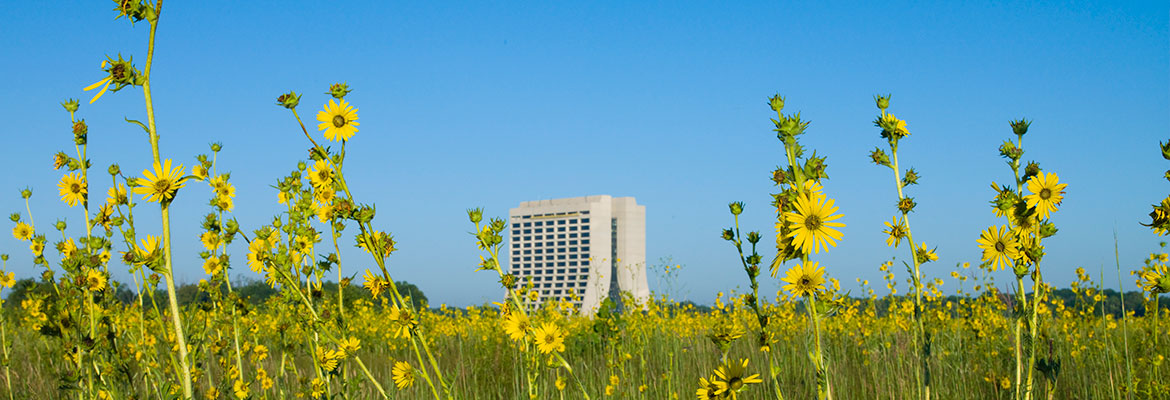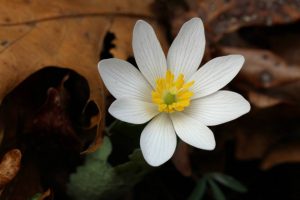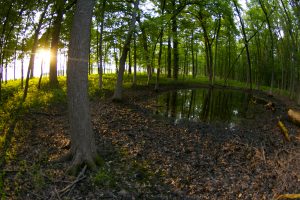Woodlands are less dense than forests but have greater woody stems per acre than the oak savanna community type (50-80% canopy cover). A conservative woodland shrub and herbaceous layer may be present in the best quality remnants, with a diversity of spring ephemerals. Soils can be deep and loamy and hydrology ranges from dry-mesic to wet-mesic. Vernal pools, important for amphibian life cycles, may also be present in woodlands. After European settlement, in the absence of fire, many woodlands became denser forest communities. Such sites can be most easily recognized by failure of the canopy tree species (e.g., oaks and hickories) to reproduce, with few represented in the seedling or sapling layer, because they are not shade-tolerant. High-quality woodlands are imperiled systems globally.
Fermilab has several woodland communities on site in all moisture gradients (Big Woods South, Big Woods North, Owl’s Nest Woods, and Kingnut Woods). The mesophication of woodlands throughout the Midwest has created an abundance of dense, shaded forests. At Fermilab, this is most apparent in the Big Woods, which was a mosaic of open woodland and savanna but is now a closed-canopy forest. Management of woodland communities is aimed at maintaining diversity and structure while restoring light levels to the understory. Some of Fermilab’s closed canopy forests hold potential to function as woodlands by tree thinning. Many times canopy thinning and invasive species removal has resulted in spontaneous growth of conservative woodland plants. Floristic quality index in managed woodlands at Fermilab ranges from 45 to 82. Invasive plant species affecting woodlands include buckthorn (Rhamnus cathartica), honeysuckle (Lonicera mackii), Japanese barberry (Berberis thunbergii), ornamental bittersweet (Celastrus orbiculatus), multiflora rose (Rosa multiflora), garlic mustard (Alliaria petiolata), and reed canary grass (Phalaris arundinacea). Low-intensity fires are carried out every 2-3 years to maintain woodland communities.



